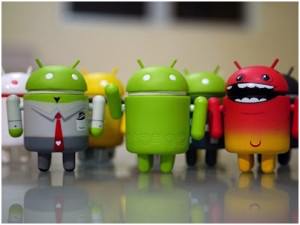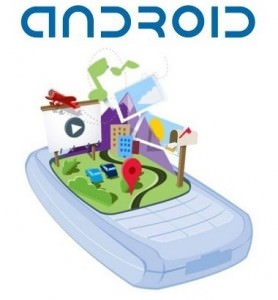This Should be Android’s Big Feature for 2012
The year is still young, which means we’ll hear plenty of rumors of what’s to come for Android in 2012. The rumor mill is already running strong, with whispers of a Siri competitor. There’s also the notion of getting Ice Cream Sandwich to more handsets, which will further unify the Android platform. Chances are, Google has a few more tricks up its sleeve as well. We can only hope that they hit on one truly killer feature.
We could all wrack our brains for weeks, and the most obvious killer feature still might not dawn on us. That’s because it’s so simple. In fact, it’s its obviousness that makes us less likely to think about it. If Google wants Android to move ahead of the pack, it needs to put a focus on battery life.
Why battery life is important
Even moderately Android users can tell you that Android battery life is often lacking. These users need to make use of outlets whenever available, so that they can have the greatest possible charge when they’re away from a power source. Without these charging sessions, some Android handsets might not make it through a full day.
Less frequent smartphone users might not feel the same effect, but things might not remain that way for long. As our smartphones are able to do more, we will necessarily use them more frequently. Today’s moderate user could be tomorrow’s heavy user. Without advancements in battery technology, Android could hit practical developmental walls. It’s tough for a device to be an MP3 player, a digital camera, and a video streamer, while still retaining other communications features.
Currently inadequate solutions
For heavy users who require extra juice, there are currently two primary options. Neither is particularly attractive, but one is necessary for heavy Android users who don’t have regular access to a charging port.
Extended batteries have become popular in some ways. They do exactly what they advertise: provide more battery life. Yet extended batteries don’t come without drawbacks. They require special battery doors and cases, since the battery is physically bigger. The added size makes it uncomfortable to carry the phone in your pocket. It also robs a smartphone of one of its useful qualities: its thinness.
Spare batteries allow users to use the smartpone as normal. That is, until the battery runs low. Then it’s time to swap, which means rebooting the phone. Since Android smartphones reboot relatively quickly this might not be much of an issue. It’s when it comes to charging the batteries that issues arise. A device that can charge a spare battery is necessary; otherwise you have to charge one battery, remove it, and then charge the other. There’s not much convenience in that.
With two in adequate solutions, it’s time for something better.
Not just battery size
It appears that manufacturers are attuned to this problem. Already we’ve seen two of them react to the short battery lives of Android smartphones. Samsung has said that it will make extending battery life a priority in 2012. Motorola has already gotten moving on this, releasing the Droid RAZR Maxx.
Hopefully Samsung has something better in mind, because the Maxx’s solution is akin to extended batteries. That is, the device is merely bigger, thanks to a larger battery. While this might provide a stopgap solution — and the Maxx is definitely thinner than a typical smartphone with an extended battery — it’s not a long-term solution. Our phones are growing taller and wider, thanks to larger displays. We do not need them growing thicker.
The solution will likely come from one of two places. We will likely see many Android manufacturers start to hardwire their batteries. Apple does this with the iPhone, and the iPhone has retained quality battery life. We’ll also likely see Google work on software solutions that will boost Android’s energy efficiency. Either of these solutions will bring better battery life to Android devices; both will probably tide us over for quite a while.
Eventually, someone will have to develop a battery technology to replace lithium-ion, just as someone developed lithium-ion to replace nickel-cadmium. That day might be a bit further in our future, though. For now there are a few decent fixes that can happen in 2012. Hopefully Google sees this and makes extended battery life Android’s killer feature for 2012. It could go a long way in deepening Android’s stronghold on the smartphone market.
Author Bio:- Joe Pawlikowski edits Prepaid Reviews. He owns an Android handset and hopes to see better energy efficiency from batteries in 2012.




1 comment
chad bennewies
need to track phone hurry up